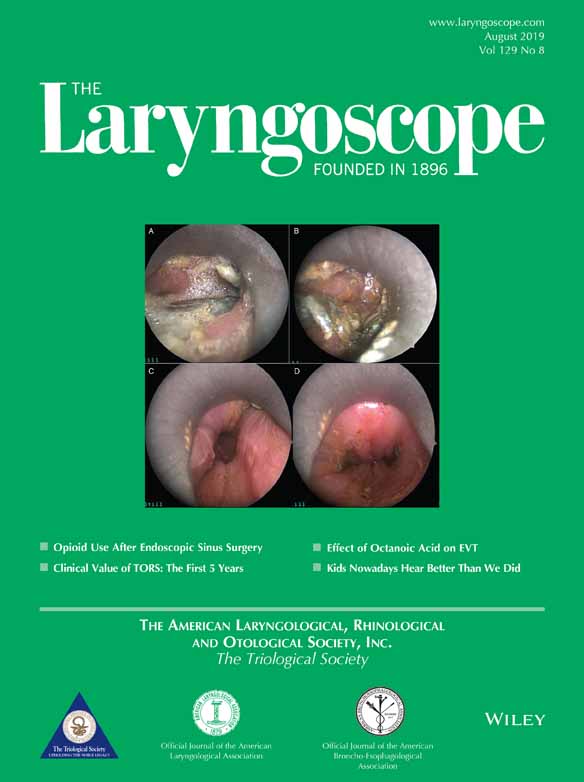Supraglottic Squamous Cell Carcinoma: A Population-Based Study of 22,675 Cases
The authors have no funding, financial relationships, or conflicts of interest to disclose.
Abstract
Objectives/Hypothesis
The authors used the Surveillance, Epidemiology, and End Results (SEER) database to analyze epidemiological features of patients presenting with supraglottic squamous cell carcinoma (SCCa) and to evaluate treatment trends and outcomes.
Methods
The SEER database was queried for patients with supraglottic SCCa from 1973 to 2013. Information on demographics; tumor size; histologic grade; American Joint Committee on Cancer (AJCC) stage; SEER local, regional, distant stage; and treatment modality were analyzed.
Results
There were 22,675 cases of primary supraglottic SCCa identified. The mean age at diagnosis was 62.3 years, with males accounting for 70.3% of all cases. A high percentage of patients presented with stage IV disease (44.9%). The most common treatment modality was radiotherapy (46.6%), followed by combination of surgery and radiotherapy (29.2%) and surgery alone (15.0%). Overall 5-year disease-specific survival (DSS) for all cases was 54.0%. When stratified by treatment modality, 5-year DSS was best for patients receiving surgery alone (64.2%). However, for patients with AJCC stage IV disease, survival was significantly better with combined surgery and radiotherapy (52.5%).
Conclusion
In general, supraglottic SCCa is treated most commonly with radiotherapy, followed by surgery and radiotherapy. Patients managed surgically had better 5-year DSS when compared to patients treated by other modalities. However, when stratified by stage, patients with AJCC stage IV disease had significantly better survival with combined surgery and radiotherapy. Of patients receiving surgery, supraglottic laryngectomy was found to have a significantly better 5-year DSS when compared to both total laryngectomy and laryngectomy, not otherwise specified.
Level of Evidence
NA
Laryngoscope, 129:1822–1827, 2019




